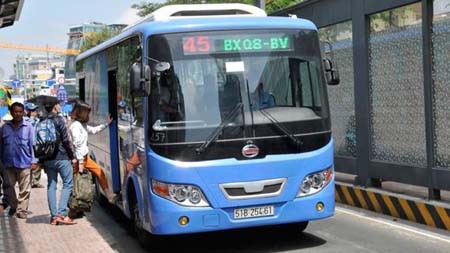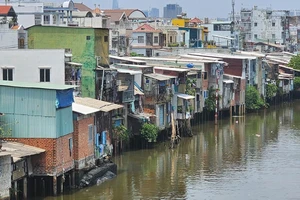
According to estimation, the regular scenario in 2016 was that HCMC released 51,846 tons of CO2, which would become 160,000 tons in 2030. If the NAMA Project is applied in such fields as agriculture, traffic, renewable energy, construction of high-rise buildings, and civil construction, there will be a decrease to 112,517 tons of CO2 in 2030 (a drop of 21 percent).
Thanks to the close collaboration between the HCMC Department of Natural Resources & Environment and other departments, industries, and related agencies, the result last year was quite impressive.
Mr. Nguyen Toan Thang, Director of this department, shared that a CO2 report system was installed in 9 high-rise buildings in HCMC in order to prepare a feasible plan regarding exhaust fumes reduction for buildings and manufacturers using large amounts of energy.
A survey on actions to cut exhaust fumes in traffic, 17 sea ports in this case, was also carried out to calculate greenhouse gas drop when implementing the NAMA Project in HCMC.
Another notable activity was training session for state officers in various departments and industries in the city to improve their skills and professional levels. This included a workshop for 20 officers about how to establish and calculate carbon release in a Business as Usual (BAU) scenario and a Low Carbon Society (LCS) one; an abroad workshop for 7 state officers in Tokyo.
HCMC hopes to receive more cooperation from both domestic and international experts of the field to launch more effective activities for greenhouse gas reduction as it committed itself in the 2015 United Nations Climate Change Conference (COP21) to cutting 8 percent of greenhouse gas by 2030, or even 25 percent if supported by international bodies.
SPI-NAMA was launched in 2015 in HCMC with the support of the Ministry of Natural Resources & Environment and Japan International Cooperation Agency (JICA).
























